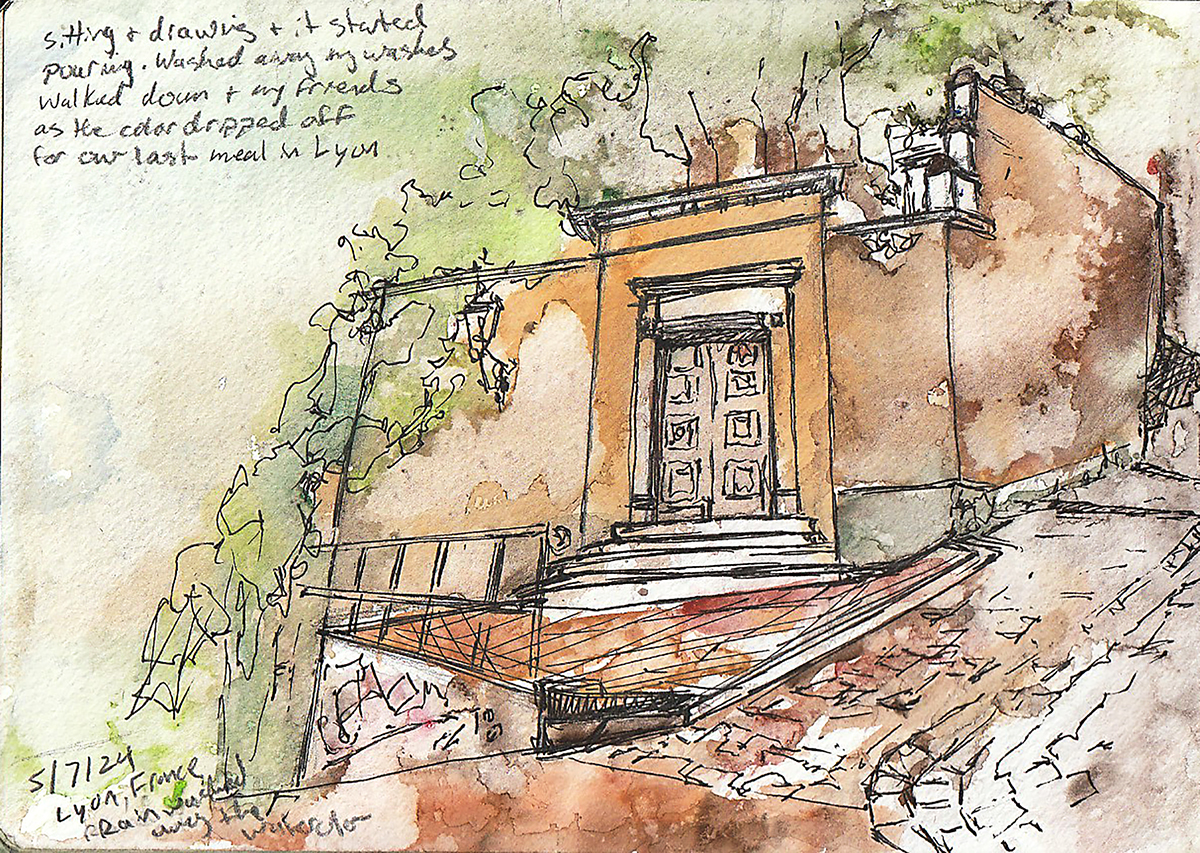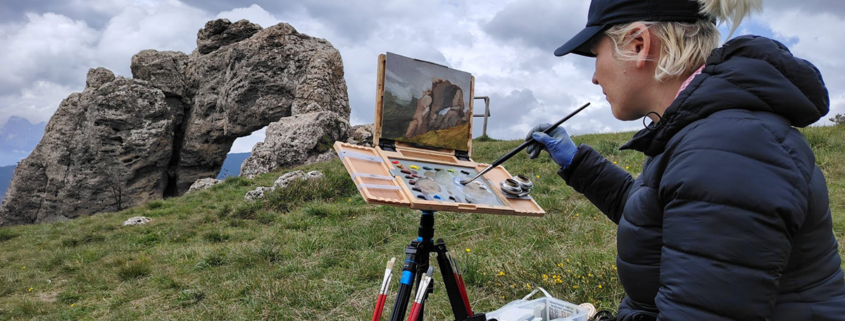Drift and Call it Dreaming: Walking as Aesthetic Practice
Do you ever craft a soundtrack for your travels? A book to read? A concept to explore? A thing to learn? I did, on a recent trip to the French Alps. The book I chose ended up setting me on a path for an aesthetic drift that led to personal and professional discovery.
View this post on Instagram
- The book: “Walkscapes: Walking as Aesthetic Practice” by architect Frencesco Careri.
- Concept: Artistic reflection through open ended discovery
- Learning: Plein air painting and urban sketching
- Soundtrack: Train to Paris
View this post on Instagram
About the Book
According to the author, Frencesco Careri, “those who wander, walk, and drift make the city visible. The empty spaces of urban decay cross oceans and reach culturally different spaces and places, raising issues of identity, transforming it playfully, modifying it (and the self) on the journey.” As a plein air painter and urban sketch artist, I feel like Careri is talking about artists as much as architects.
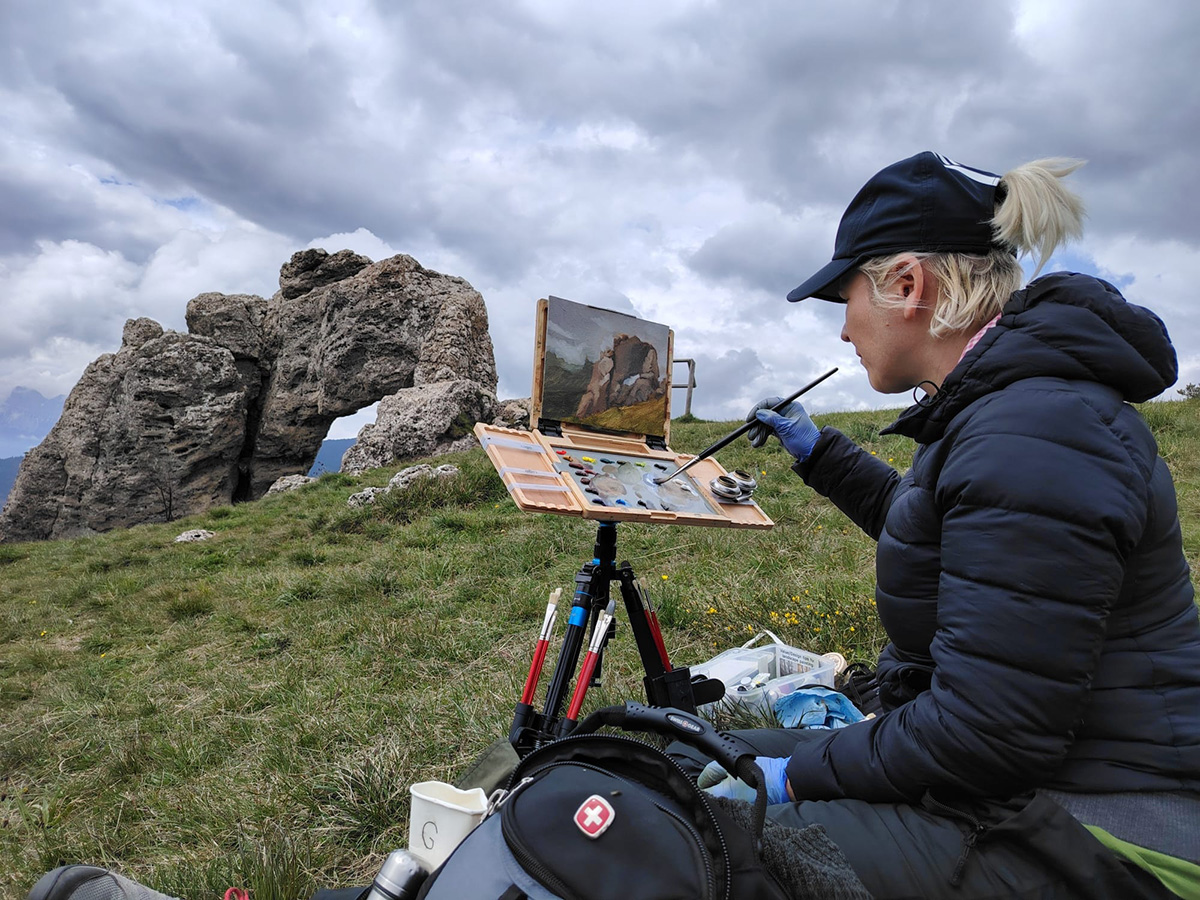
The author develops his thesis through the artistic movements of Dada, Surrealism, Situationism and Futurism where each defines a manifesto. Each group took a different approach to the idea of absorbing the energy of a city by walking as a practice to bring impressions to the subconscious.Those impressions became the material and subject from which to create an authentic life, aesthetic art, and visual representation that express the essence of a city experienced.
Conceptually Thinking…
For the Dadaists the expression was to elevate the banal, everyday life and mundane experiences as art. Dada was an anti-art movement, demanding a reset to the institution of art that had become predictable. The art was the people in a place as happening, rather than the place or object observed. Kinda like a flash mob without Tiktok.
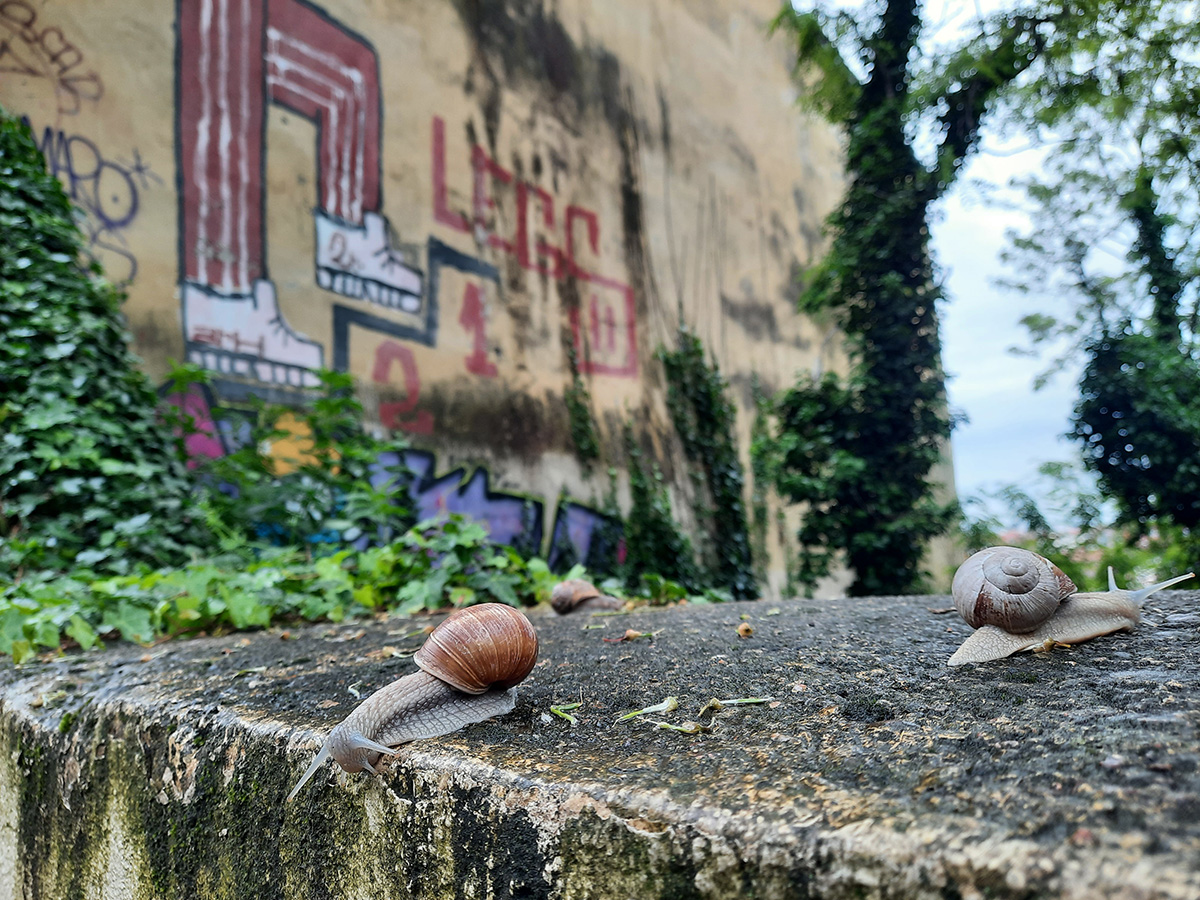
The Futurists were fascinated and enthralled by the speed, energy and vivaciousness that came with advances of technology and urban modernity. Walking was a vehicle to witness and absorb the frenetic sense of going, movement, vital force, energy, and the bustling all at onceness of the transient city. Think of their excitement like subway surfers but without the near death experience.
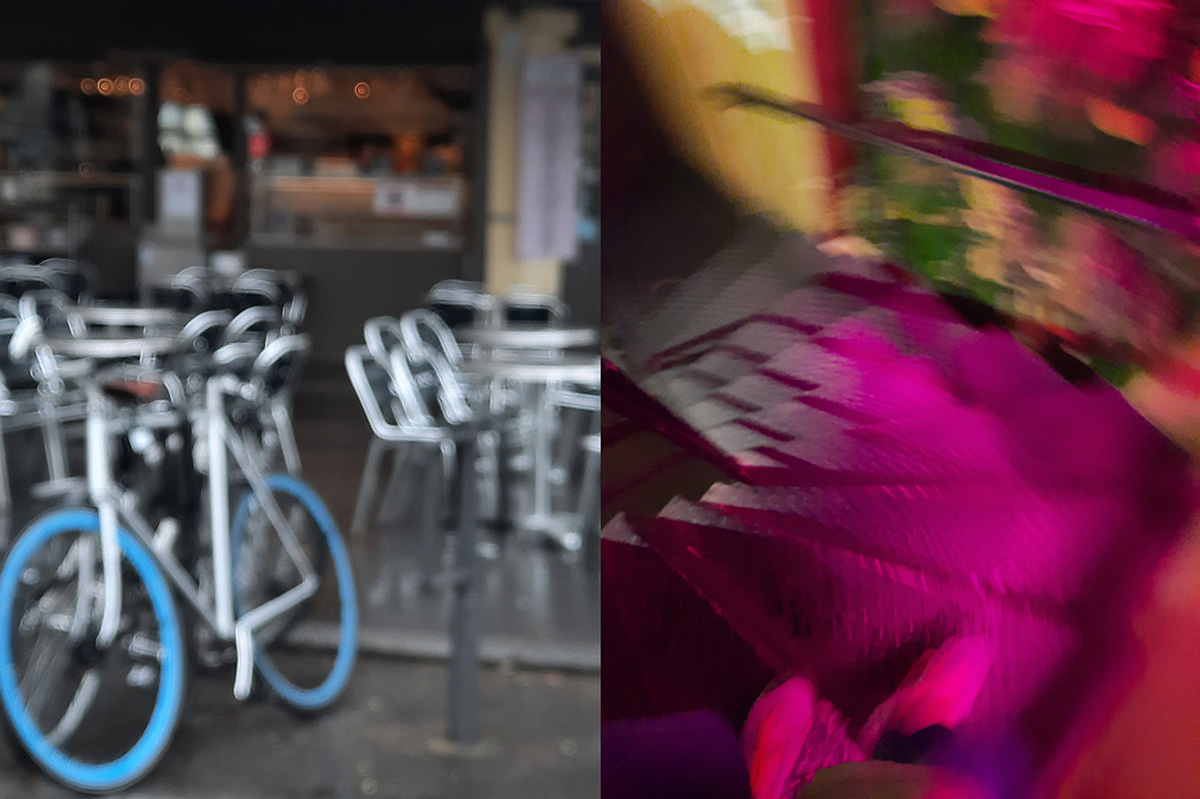
For the Surrealists, wandering aimed at evoking the sense of passage through the unconscious of a dream-like city experience. Similar to automatic writing in real space, the objective was to reveal the unconscious zones of space and repressed memories of the city, using them as artistic material. Think of it like the movie Inception except you’re Leonardo DiCaprio infiltrating your own dreams.

And the Situationists experimented in the city with playful creative behavior and environments by constructing situations for a better life experience. Something like what Bill Murray does when he crashes a party to wash the dishes. Don’t believe me? Read about it Here!
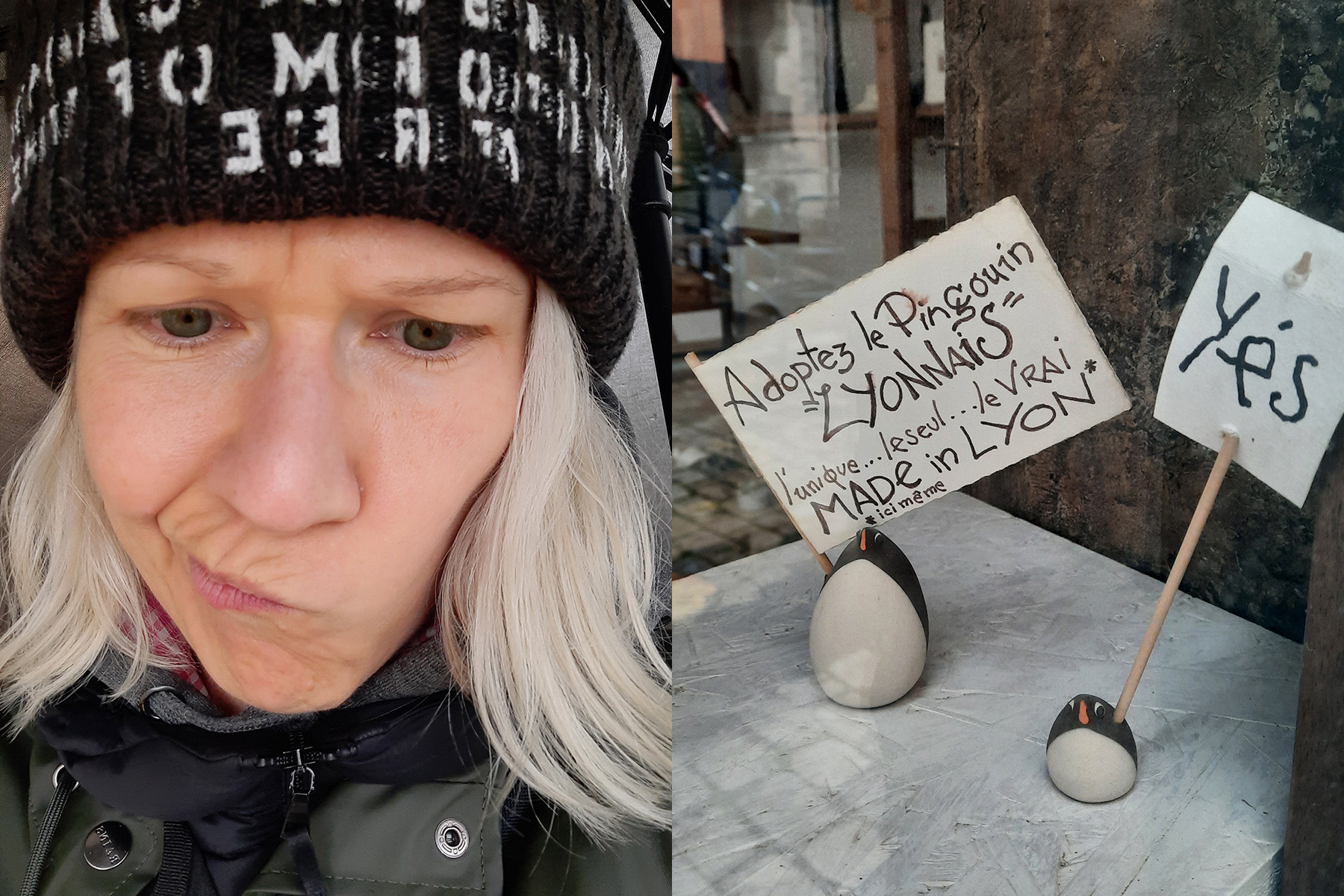
Learning Abstraction
So when I picked up this book on Walkscapes and read about peripheral spaces, urban places, artistic drifting, situational encounters, and the obsession with the urban energy of futurism, it resonated with why my appetite for travel, sketching, plein air painting and endlessly wandering as essential to my creative process.
The reasons behind each of these movements, I learned, is something that I am trying to reach for in my visual work. To playfully transform a scene into a visceral experience that is received and understood by way of metaphor and taps into the memory of the viewer to form a unique impression that is both familiar and discovered.
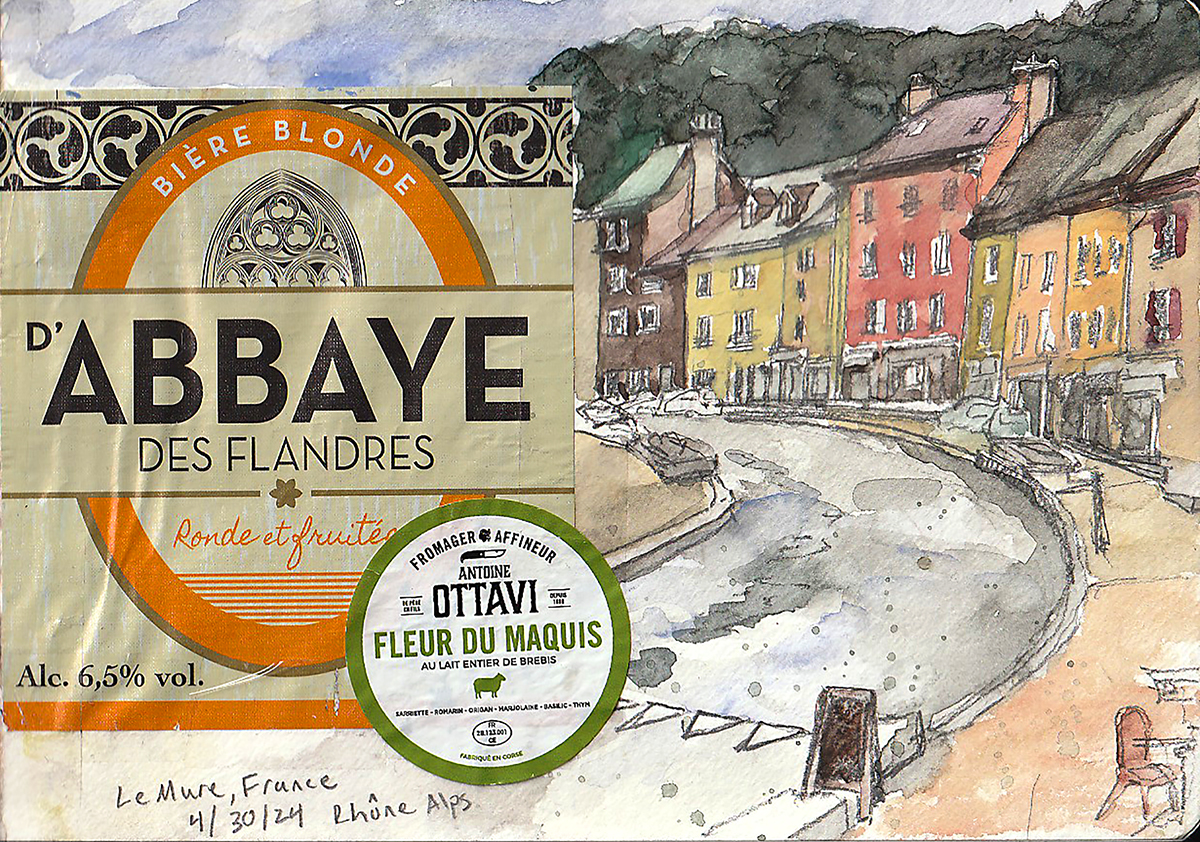
However, I also learned that walking as aesthetic practice was a creative right of passage with origins in primal and nomadic architecture. I never knew it was anyone else’s thing at all, but as Careri describes in Passaic County New Jersey it was even a thing in the 70’s and 80s. Artists have always been wandering and wondering.
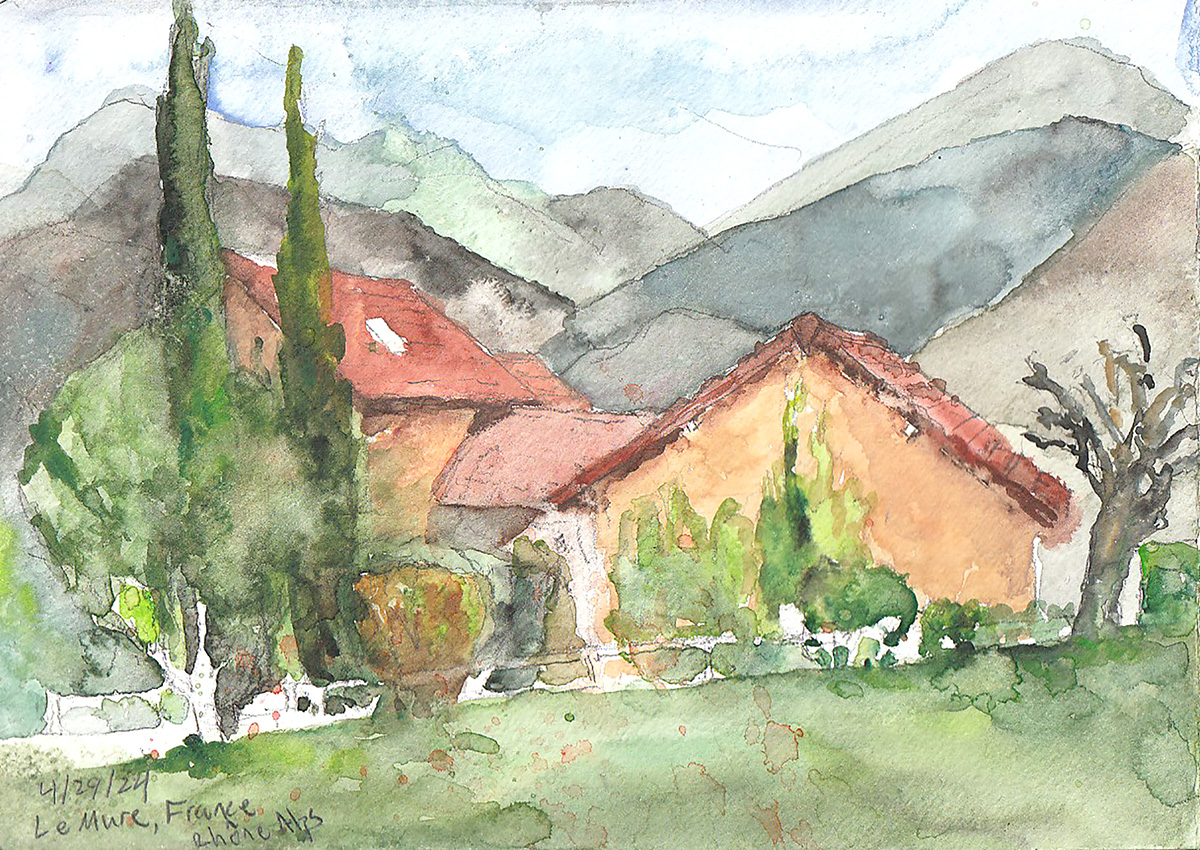
The Soundtrack of Solitude
Journeying to the French Alps came with the intention of focusing on deep observation, being quiet, walking alone, and documenting the impression of my experiences. Not only in the sketches and paintings created on location but also in the music I listened to, the textures, smells and sounds. I wanted to internalize them in some dream-like form such that they become the material for greater works beyond these days of painting.
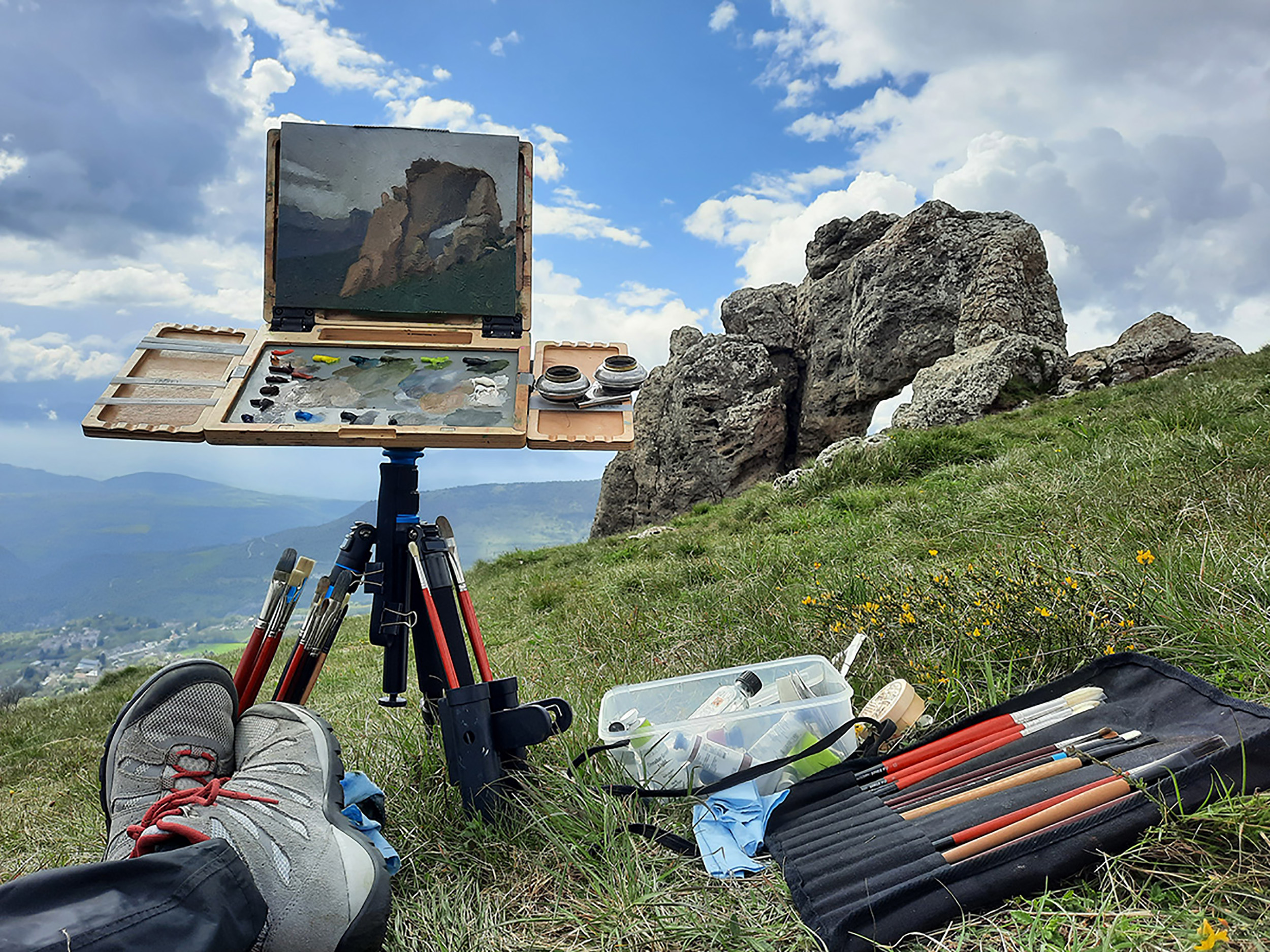
Drifting
Some of my most significant travel experiences have jostled me out of what felt like a stuck place. The lucidity of space and exploring without structure or familiarity has opened creative connections that usually lead to new worlds, places and spaces well beyond the trip itself. New collections of work, moving area codes and even career changes have been the result of trips spent drifting in unfamiliar territories.

Places we visit often reappear in our dreams, more vivid and surreal than the places they represent. For example, I lived in Savannah, Georgia twenty years ago. Strolling among moss-covered trees and exploring the park squares inspired dreams where I lived inside a tree.

I still dream of climbing those tree tops, discovering secret doors, hidden rooms, abandoned historic sites, graveyards, and unknown neighborhoods— each as real as the ones I had once walked through. These impressions create worlds inside and outside of consciousness; ultimately informing the subjects of my work on paper and canvas.
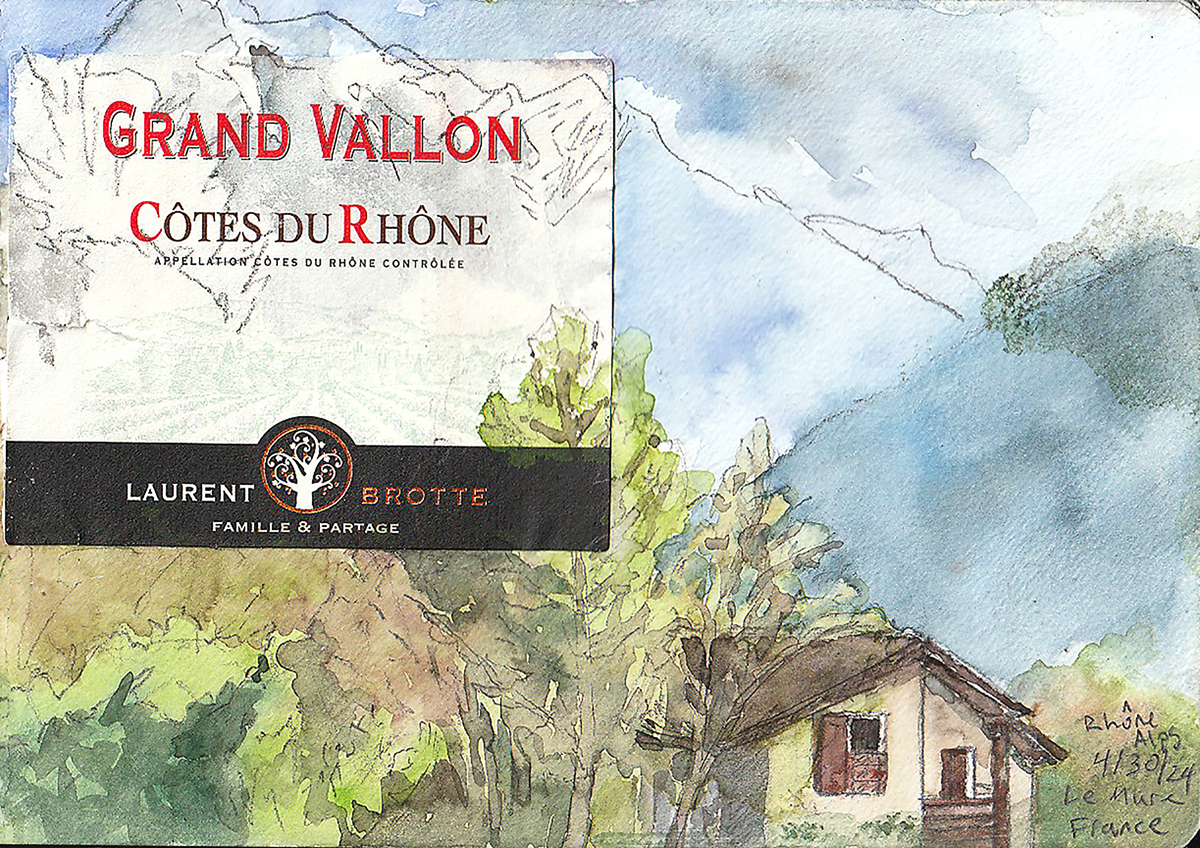
Wandering
While I reflected on the closing chapter in one area of my life, the rain-soaked, ancient roman roads of Lyon echoed the melancholy optimism in my playlist. The rainwater streamed off my watercolor sketches and faded the saturated pigments before they could dry. The pen and ink spread like rorschach blotted inclinations.
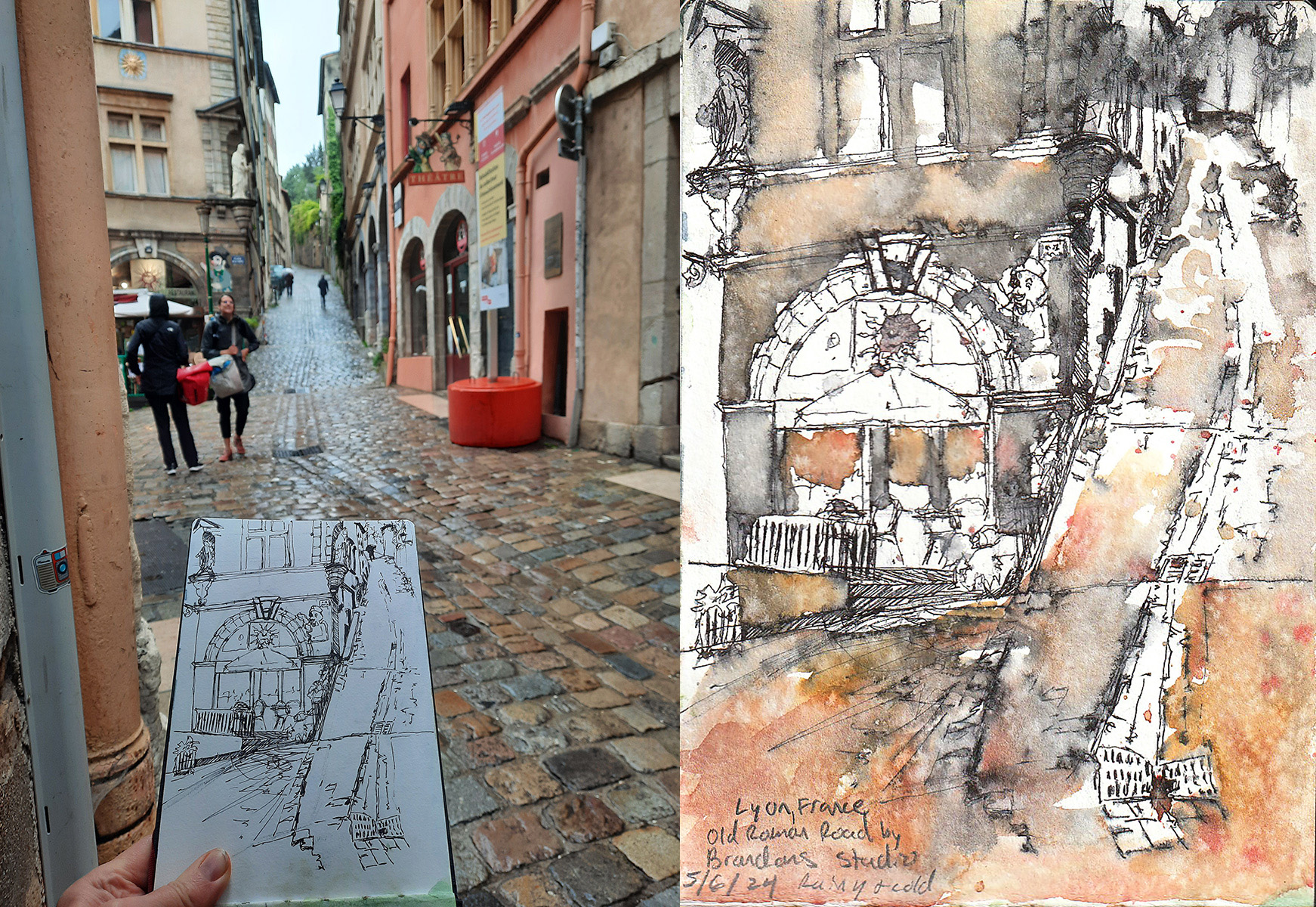
The rain slicked oil pigments dripped off the panel into my cold paint box tripod as I huddled under a covered relic in the city center of a former miner town. A nearby man verbally assaulted his dog like something out of “Waiting for Godot” while an elderly woman who passed by earlier on her bike returned with a book to tell us stories of the town and her youth.
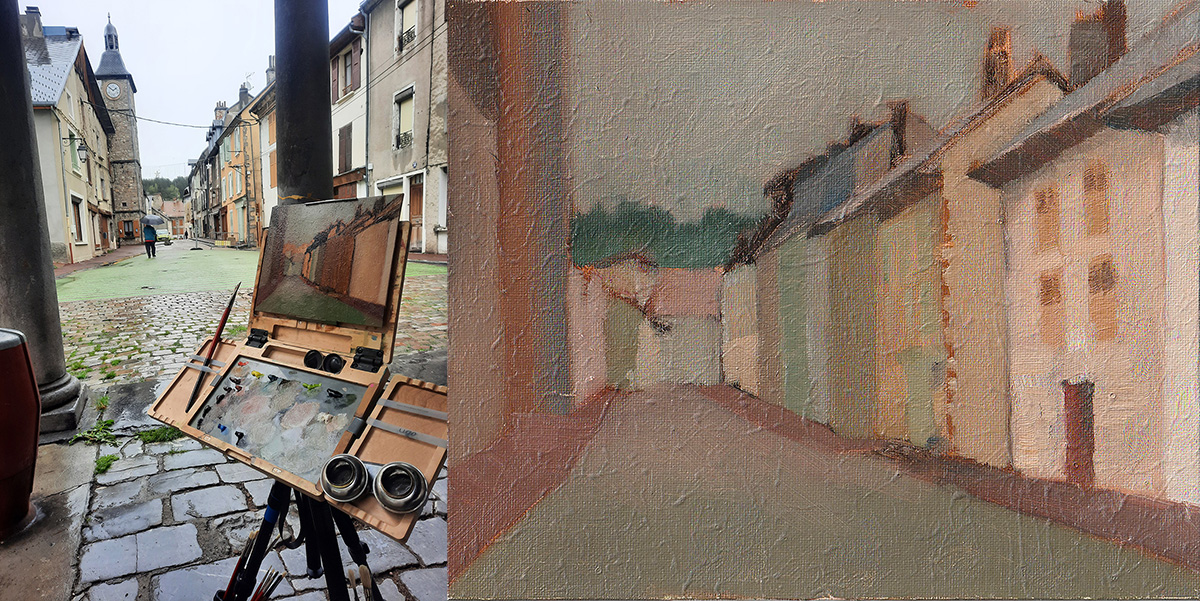
The paint was too wet and the afternoon too cold to finish, but the impressions are there. The memory of the afternoon are recalled to memory when I see that unfinished painting sitting in my studio. It has an Edward Hopper quality to it and will likely provide a dreamscape for later works.
Wondering
The power of Plein Air is that it is immediate, finished or not, it is the moment as it was in your purview. It provides the most vivid rearview mirror of a life lived in artistic motion as we hurl towards a discoverable future and movable feast. To lose time and gain space, get devoured by events and grow something new from fading vapor of impressions and share some inclination of the human experience with others, is the end game as much as the means of getting there.
Like the surrealists and the situationists, my goal is to achieve a union between art and life and to express it for others to know as true.
